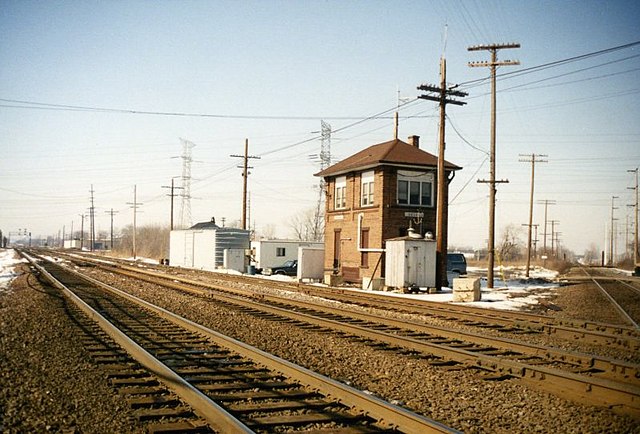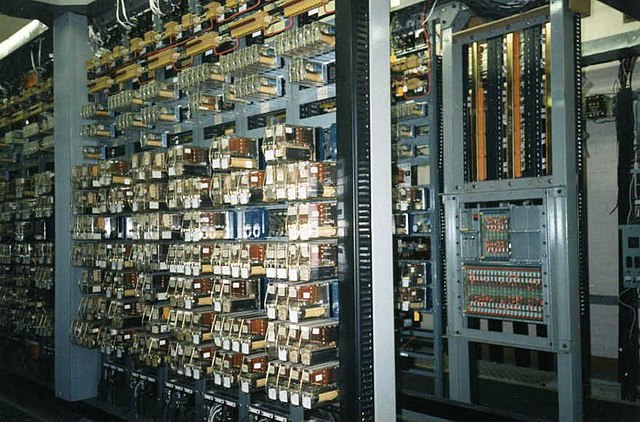In railway signalling, an interlocking is an arrangement of signal apparatus that prevents conflicting movements through an arrangement of tracks such as junctions or crossings. In North America, a set of signalling appliances and tracks interlocked together are sometimes collectively referred to as an interlocking plant or just as an interlocking. An interlocking system is designed so that it is impossible to display a signal to proceed unless the route to be used is proven safe.
The tower and tracks at Deval interlocking, Des Plaines, Illinois, in 1993
A model board and lever machine
A view of the locking bed inside Deval Tower, Des Plaines, Illinois
Part of a relay interlocking using miniature plug-in relays
Railway signalling (BE), or railroad signaling (AE), is a system used to control the movement of railway traffic. Trains move on fixed rails, making them uniquely susceptible to collision. This susceptibility is exacerbated by the enormous weight and inertia of a train, which makes it difficult to quickly stop when encountering an obstacle. In the UK, the Regulation of Railways Act 1889 introduced a series of requirements on matters such as the implementation of interlocked block signalling and other safety measures as a direct result of the Armagh rail disaster in that year.
A Class 66 locomotive (right) is waiting at a red signal while a First Great Western passenger train (left) crosses its path at a junction.
A block signal and a 130 km/h speed limit at kilometer post 547 in Iisalmi, Finland
Short signal blocks on the Toronto Transit Commission subway system. A train (not visible) has just passed the most distant, leftmost signal, and the two most distant signals are red (stop and stay aspect). The next closest signal is yellow (proceed with caution), and the nearest signal shows green (proceed).
Traditional mechanical signals on display at a railway station in Steinfurt, Germany








